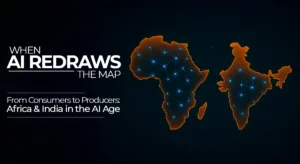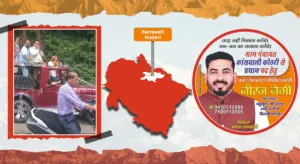I arrived back in my village in Doonga, Dehradun, Uttarakhand, on 30th July, just two days after the Zila Parishad elections. I had just missed the vote, but the energy still hung in the air—posters of candidates plastered across shopfronts, lamp posts, trees, and homes. The buzz was palpable.
On 31st July, the election results were announced, and Doonga village erupted in celebration. Drums beat, people danced, and joy spread through the narrow lanes of Doonga. Neeraj Negi, a young man from just around the corner of my house, had been elected as the Pradhan (Sarpanch) of Gram Panchayat Kanswali Kothri. As Pradhan, he now serves as the head of the Gram Panchayat, responsible for leading development efforts, implementing local schemes, and ensuring basic services reach the village communities.
These Zila Parishad elections, held every five years, are part of India’s Panchayati Raj system, a three-tier framework for rural self-governance. While national and state elections shape law and policy, panchayat elections are where democracy lives and breathes on the ground—in roads repaired, water supplied, and livelihoods supported.
This year’s elections in Uttarakhand saw a remarkable shift: young candidates, women, and independents surged ahead, winning seats traditionally held by the BJP and Congress. While Neeraj Negi is locally known to have BJP support, his win reflects more than party politics—it reflects trust built through hard work, visibility, and grassroots mobilisation.
In all my years voting in the UK, I’ve never witnessed this level of joy and pride in a local election. My go-to person for sweet tea, snacks, and news at the Doonga crossroads shared how, after ten years, the seat had returned to Doonga. The community had organised, mobilised, and turned out to vote—this was democracy in action.
Yesterday, I saw Neeraj Negi standing in an open-top jeep, flanked by loudspeakers blasting Hindi music, leading a victory parade through the villages he will now represent.
As an outsider who has made Doonga her home since 2011, this is more than a celebration. It is a moment of hope—for leadership rooted in the village, for young voices rising, and for development led from within.













